by J. Gonzo
[Editor’s note: the food-themed covers that sparked this editorial off have now been replaced, but the discussion of cultural stereotypes, representation and the Hispanic/Latine comics experience are just as important as ever as we start National Hispanic Heritage Month which runs September 15th through October 15th. Look for more features for NHHM here on the Beat.]
This past month saw the release of the cultural-cuisine-themed cover images that DC Comics intended to use for their Hispanic Heritage Month variants – to much online consternation. Now that the dust has settled, the outrage has seemingly been placated, and attentions have shifted on to new industry scandals, I wanted to take a brief moment to see what, if anything, can be learned from this latest insensitivity and disservice. Can we truly address the underlying issue here in a positive and constructive way?
Firstly and for the record, I need to state unequivocally that I LOVE TAMALES! – Sweet Tamales, especially (admittedly, an acquired taste and not for everyone). As a child, once or twice a year, I would join the generational assembly line convened in my Nana’s minuscule apartment kitchen to assist in the creation of dozens of dozens of this ancestral staple. Hours spent slow-simmering meats and arm-cramping kneading of masa to neutral buoyancy ensured quality and flavor.
And, after the preponderance of time and effort had been exhausted producing the savory Tamales, my Nana would furtively beckon me to her so that we might conspire to prepare a scant handful of sweet ones. The masa was spread across the damp corn husk, then a single dollop from an antique spoon (a spoon orphaned from its original silver set decades before, but whose sole purpose now was to ensure the exact appropriate amount of filing for Tamales – known to our family as “the Tamale Spoon”) of canned pineapple nestled onto the masa, and then a single raisin was poked into the pineapple. This secret batch was for me, my mother, and my Nana – a coalescence of tradition, our particular tastes, and the permission we each granted each other to justify the effort spent to engage in this small detour that birthed these batches of sweet Tamales – and they were beyond delicious!
Those sweet tamales are indicative of the intricacies of my love for just one of the foods of my culture. My love for the history, traditions, and personal experience of my culture’s cuisine can bring me to rapturous tears if considered for more than a moment. And so, to see “Ethnic Food” haphazardly tacked-on to generic comic book covers without care or consideration, in a faint effort to celebrate Hispanic Heritage Month, was aggrieving in a manner that I had never experienced before.
Over the years, I have, of course, been inundated with lackluster efforts and lip-service attempts by companies, large and small, to commemorate and honor a wide variety of LatinX cultures during Hispanic Heritage Month (September 15 – October 15) with performative, and oft-times insulting, social media posts, advertisements and PR stunts. The tone-deafness of corporations’ cultural sensitivity in this country does not start nor stop with DC Comics, or even the comic book industry as a whole. In fact, every Fall, I brace myself for a new deluge of Sombreros and Serrapes affixed to corporate mascots and proxies with varying degrees of well-intentioned ignorance and the situational irony of their actual reception and/or affect; so, in this regard, DC’s attempts were not without precedent or expectation. I would like to clearly state that I don’t feel as though anyone at DC intended to be offensive or acted maliciously; and I do honestly believe that their intention was indeed to honor or celebrate Hispanic cultures… but, that’s kind of the problem.
To be fair, I wasn’t expecting an insightful treatise on the myriad Hispanic cultures that are native to the 30+ Latin countries that comprise the Western Hemisphere and the nuanced differences between them, oor even accurate or pithy visual summaries of the six cultures DC did decide to feature, BUT I was hoping for some kind of expression of beauty and/or perhaps a modicum of joy and I got NONE OF THAT. What I got, instead, was a slap in the face. The first cover I that I saw was the Kyle Raynor Green Lantern cover by Mexican artist Jorge Molina (the Tamale version). Setting aside the improperly wrapped and packaged Tamales and the incorrect punctuation of the Spanish phrase on the flag, this cover is as lazy as the retconned ethnicity of the hero on display here. Having your hero merely hold (with very little regard, in this case) something that is LatinX does not make this a celebration of Hispanic Heritage. (The former is a sentence I never dreamed that I would have to actually write!) There has been much hay made about the creation of this version and the original cover version (an homage to the mural La Patria by Jorge Camarena – a piece ripe with heroic symbolism) that was deemed unusable for purported legal concerns, but ultimately used once outrage for the Tamale cover came to light. I won’t rehash the “He Said, They Said” of the events leading to the original version being used, but I did reach out to DC for comment and a DC spokesperson replied:
“It is part of DC’s internal creative process to receive and develop multiple versions of comic artwork from our artists. Some are released as variant covers, others are never used. This weekend, an image by Jorge Molina was incorrectly reported to be DC’s official cover for Titans United: Bloodpact #1. DC is committed to celebrating diversity and is proud to honor Hispanic Heritage Month. The actual cover art by Jorge Molina (attached) and will go on sale September 20.
Additionally, Jorge Molina posted the correct cover to his socials.”
Anyone who wishes to see the series of social media posts by Molina concerning the two versions is welcome to do so and infer whatever version of the events that led to the Tamale covers creation and ultimate dismissal that they deem true; I am not going to dispute the official narrative here – nor is it germane to my umbrage. My offense stems partly from the creation of the Tamale cover, but primarily from the additional Hispanic Heritage Month covers that the Tamale cover was created to complement and that, somehow, homage to an evocative Mexican mural was somehow a misstep.
Those food covers are offensive. They are offensive in their indolence and by how reductive they are. The apparent multi-second ideation process that prompted the creation of these covers is indicative of the dismissive regard that much of pop culture (and its decision makers) have for LatinX cultures. I understand that food is the primary point at which people not native to these cultures engage with these cultures on a regular basis, but to have food serve as summaries of the culture is egregious. The snipes of LatinX food in the margins of, and as addendum to, these basic Superhero Comic covers are most harmful in their tacit assertion that just tacking-on some LatinX accoutrements is tantamount to actual celebration of these cultures.
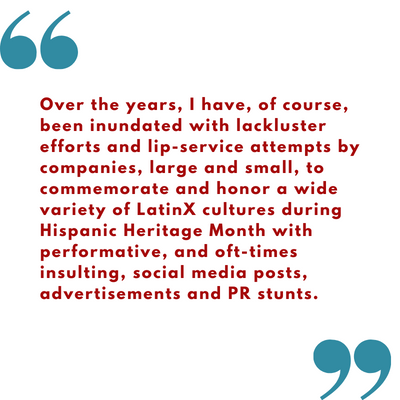
The real problem is that someone saw the original Molina cover, with its power, tradition and majesty, and the The Question with some LatinX food strewn around Renee and thought: “Yup, that’s the same thing.” At this moment, this aspect of the offense has been unpacked and examined in many other articles and I won’t belabor the point here, but I will say, PERSONALLY, that, if they had created a cover where Kyle Raynor was using his ring to make a construct of a leaf blower that he was then using to tidy the Hall of Justice’s lawn, I WOULD NOT HAVE BEEN one iota more offended than I was when I saw the Tamale cover, or Kendra in the service industry, or Jaime with Tacos – not just because they were ill-conceived or the flippant cultural inclusion, but because we all know that there is an arduous process to getting any of these covers made. There was ample time for someone, ANYONE, to take a moment to consider how they might be received; and absolutely no one did so! Regardless of what is said or how it’s spun, these actions speak volumes.
So, where do we go from here? As I said before, I want to map a clear path forward not just dress-down a publisher for making a well-intentioned, yet horribly-executed, mistake. How do we prevent good intentions from becoming patronizing stereotypes?
First: LET US TELL OUR OWN STORY. This goes well beyond just hiring Latinx artists to produce these covers – I mean: allow us to craft the narrative of the moment being portrayed on these covers; perhaps even give over control of the design and trade dress for these variants, and well (“Green Lantern” illustrated in a Meso-American font might do a lot more to reinforce Raynor’s ethnicity than just telling the readers that “oh ya, we retconned some heretofore unknown Latin heritage into this guy”). Controlling the narrative will also allow for some legitimate expressions of joy as they celebrate their respective cultures. This cannot be done if the creative team is being overseen or can be overused by someone not of these cultures – which will bring me to my second point.
HIRE SOMEONE TO SPEARHEAD THESE PROJECTS. If your company is not staffed to authentically address the diversity being considered, hire someone who can oversee and curate. I know that companies are concerned with profitability and may feel as though they cannot afford a consultant, but the trust afforded to this position would indicate genuine appreciation for these cultures. This consideration and show of faith alone will garner more goodwill than any amount of money or ink ever could.
UNDERSTAND THAT YOU MIGHT NOT UNDERSTAND. The entire point of setting aside this month to celebrate LatinX cultures is to create opportunities for understanding – precisely because the majority of this nation DOES NOT UNDERSTAND the ethos and nuances of LatinX peoples. The idea that non-LatinX people should tell LatinX people how to represent LatinX people to non-LatinX people is as ridiculous as the construction of this sentence. LatinX stories and notions of heroism are markedly different from the Campbellian archetypes that American audiences are conditioned with; authentic representation may conflict with your socialized concept of heroics, but the specificity of that divergence IS the nucleus of the culture – without it, the rest is just apparel and appetites free from any real meaning.
ASK IF THIS IS INSENSITIVE OR REDUCTIVE. This seems like it should be self-explanatory, but, then again, I did feel compelled to write this article because seemingly no one did ask this. Also, feel free to take a straw poll, send emails, or otherwise ask around – especially ask people (more than one) of the culture you are representing if there is any issue with the work created.
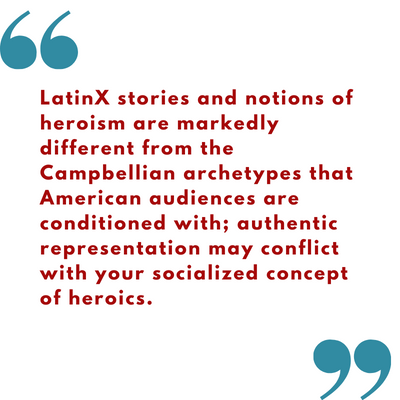
MAYBE MORE THAN JUST ALTERNATE COVERS. My last suggestion is more of a wish list item, but I hope that someday the celebration goes beyond a LatinX version of a comic that already has a main cover version. It is sometimes fun to see my culture represented on the cover, but the interiors are still going to be filled with stories that struggle to provide any substantial representation of Latinx people. More often than not, LatinX characters in comics are legacy heroes – the LatinX version of an already established character (Miles Morales, Jaime Reyes, Renee Montoya, Robbie Reyes, etc) and I would hate to think, and refuse to accept, that this is our station; always an alternate version or LatinX derivative – never our own entity. These covers are part and parcel to the problematic regard that the LatinX community is held in. Though it would be heartening to read a Hispanic History Month comic that actually contained a LatinX storyline, with authentically LatinX characters, by a LatinX creative team, let’s try to get these covers on the right track first.
_________
J. Gonzo is a Chicano Comicbook Artist best known as the Writer/Artist of his own title La Mano del Destino (self-published singles; collected edition – Image Comics) and the artist of La Voz de MAYO: Tata Rambo (Top Cow/Image Comics). He attended the Orange County High School of the Arts’ Visual Arts Program and went to a terrible trade school for a degree in Graphic Design. He also apprenticed and tattooed professionally for a number of years before entering the world of advertising and design. Gonzo has spent the past 25-plus years using his creative skills at ad agencies, toy and comic companies, design studios, freelancing, and creating his own Comicbooks.
Top image:
La Patria by Jorge González Camarena, a well known piece of artwork in Mexico that was used on textbook covers for years, and formed the inspiration for Jorge Molina’s Green Lantern cover.


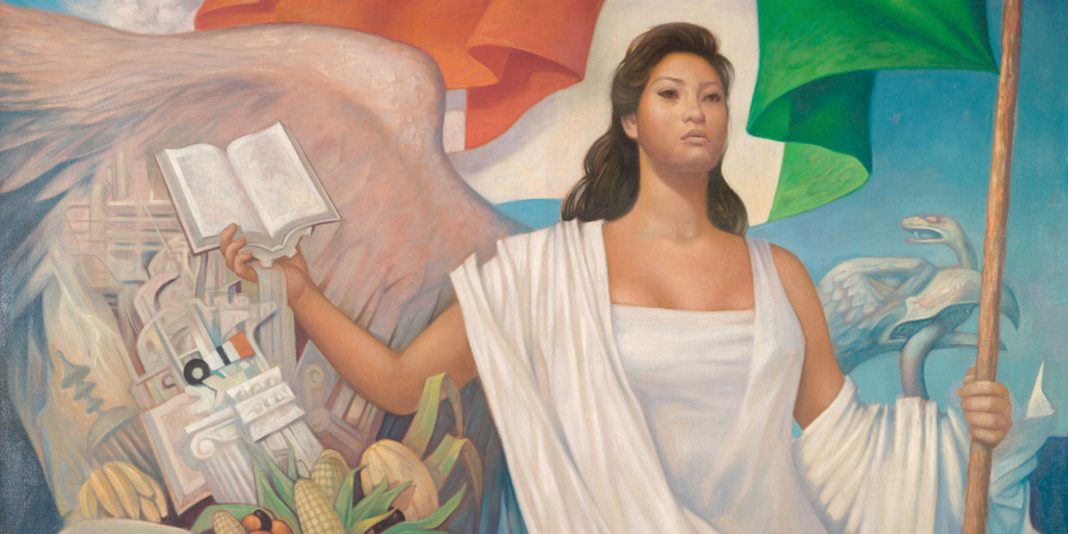
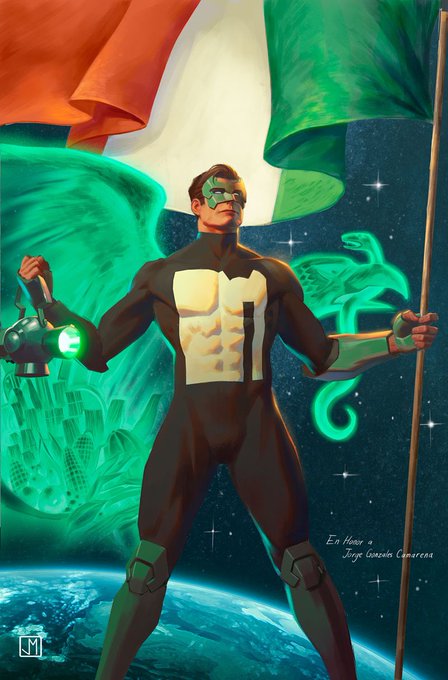
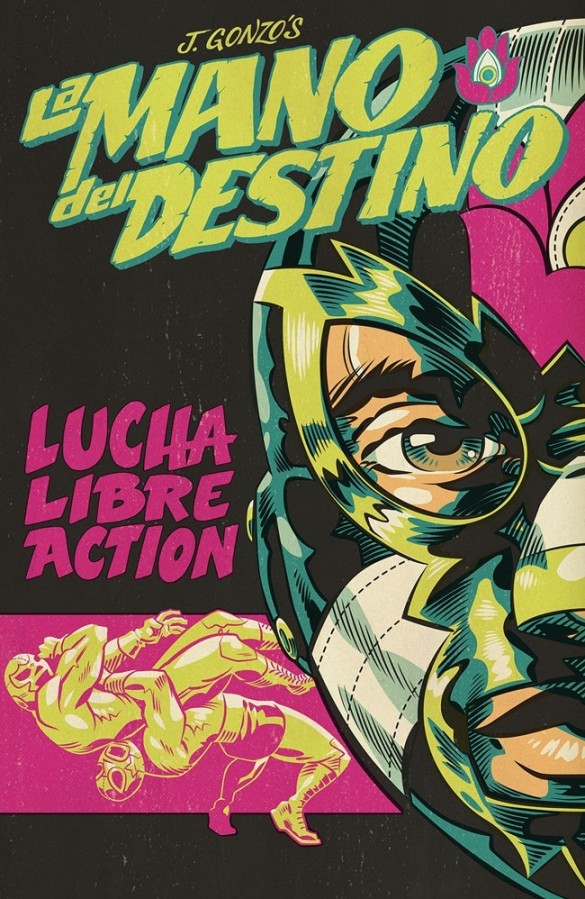






I find it ironic that it was a cover of a character that was retconned into being Hispanic that triggered all this, rather than one that was created to be from the beginning.
Thank you J. for putting this so plainly. What I can’t help thinking is who was the person who i ultimately responsible for the decision and why did no one else around them think it a bad idea? I’m not Latinx, and I could see the problems with it…how could they not?
Comments are closed.